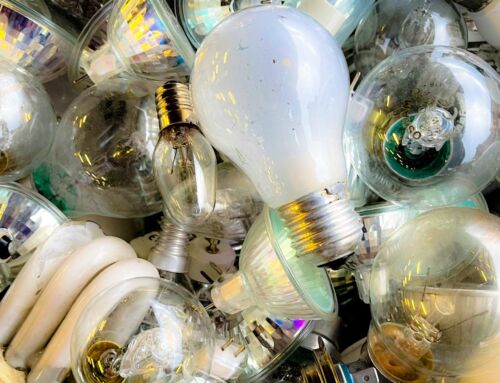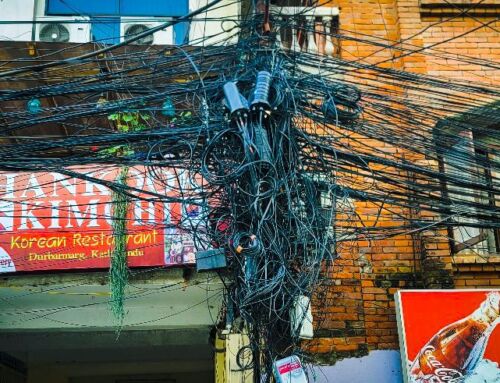View by Topic
Recent Articles
-
New Environmental Laws from the 2024 Maryland Legislative SessionSaturday, April 27th, 2024
-
EPA Designates PFOA and PFOS as Hazardous Substances under Superfund LawSaturday, April 20th, 2024
-
Federal Government Finalizes New Efficiency Standards for LightbulbsSaturday, April 13th, 2024
-
2024 IECC is Final After Addressing Preemption IssuesSaturday, April 6th, 2024
-
Settlement Portends Broad Failure in Attempts to Ban Natural GasSaturday, March 30th, 2024
View by Month/Year
“Green Building Law Update” Headlines
Recent Articles & News from
Stuart Kaplow’s blog
at GreenBuildingLawUpdate.com
- New Environmental Laws in Maryland: 2024 Brings Opportunities for Businesses April 28, 2024
- EPA Takes Action: PFOA and PFOS Now Hazardous Substances Under Superfund Law April 21, 2024
- Shedding Light on the Future: The Evolution of Lightbulbs in the Wake of New Energy Efficiency Standards April 14, 2024
- 2024 International Energy Conservation Code is Final After Addressing Preemption April 7, 2024
Subscribe to the Green Building Law Update!
Stuart Kaplow brings his expertise and extensive experience to the table with his unique digital publication, "Green Building Law Update". Subscribers receive regular updates to keep them informed about important issues surrounding Environmental Law, Green Building & Real Estate Law, as well as the emerging demand for Environmental Social Governance (ESG).
Get fresh content through the lense of Stuart Kaplow's cutting-edge expertise, innovative commentary and insider perspective. Don't miss another issue! Subscribe below.

Unplugged Truth: Greenhouse Gas Emissions from Charging Your Smartphone
At a time when government is mandating building owners drastically reduce GHG emissions and plug loads account for as much as 50% of energy consumption in offices, when building occupants are put on an energy diet will charging smartphones be banned from the office?
Which caused us to ponder, “what quantity of greenhouse gas emissions are produced by using an iPhone?”
The question might appear pedestrian but in an increasingly technological world, smartphones have become indispensable parts of our lives that keep us connected, informed, and entertained. We rely on them for communication, navigation, social media, and for so much more. However, as the use of smartphones improves the quality of life for increasing numbers of inhabitants of the planet, so does the call of apocalyptic environmentalism that we must drastically reduce consumption and the resultant GHG emissions. Given that more than 3.5 billion people currently use a smartphone and that number continues to increase dramatically as we get richer, smarter, and more knowledgeable, we thought you might be interested in our response to the question.
In this blog post, we will explore just how much greenhouse gas emissions are generated from charging a single smartphone and, by extension, from all the smartphones in the world. We will also delve into the broader uncertainty over greenhouse gas emission calculations in this context.
As one might expect, the vast percentage of GHG emissions are produced during the manufacturing of a smartphone, but that was not the question.
And as a threshold matter, we do not actually measure or count GHG emissions, we calculate them. And yes, calculating suggests a scheming or ruthlessly determined way. So, let’s show our work, ..
We started with an authoritative source, not relying on the data from smartphone companies found on the outside of the box. According to the U.S. Department of Energy’s Compliance Certification Database, tracking 4,299,243 products and updated every two weeks, the 24 hour energy consumed by an average smartphone battery is 14.46 Watt hours (.. because of more energy efficiency chips current smartphones do not use more energy per hour than older cells phones, but we use them many more hours a day).
That number includes the amount of energy needed to charge a fully depleted smartphone battery and maintain that full charge throughout the day. The average time required to completely recharge a smartphone battery is 2 hours, as reported in a 4 week academic study of more than 4,000 people to assess their smartphone charging habits. Maintenance mode power, also known as the power consumed when the phone is fully charged and the charger is still plugged in, is 0.13 Watts, again according to the DOE. To obtain the amount of energy consumed to charge the smartphone, subtract the amount of energy consumed in “maintenance mode” (0.13 Watts times 22 hours) from the 24 hour energy consumed (14.46 Watt hours).
We then determined carbon dioxide emissions per smartphone charged by multiplying the energy use per smartphone charged by the national weighted average carbon dioxide marginal emission rate for delivered electricity. The national weighted average carbon dioxide marginal emission rate for delivered electricity in 2019 was 1,562.4 lbs. of carbon dioxide per megawatt hour (.. which is actually higher in Maryland, a net importer of electricity including a significant amount of electricity generated by coal), which accounts for losses during transmission and distribution, as available from the authoritative EPA Avoided Emissions and geneRation Tool (AVERT).
Due to rounding, performing the calculations given in the equations below may not return the exact results, but on an annual basis that is 2.3 metric tons of carbon dioxide equivalent per smartphone.
Statisticians might suggest there is a high degree of uncertainty in that calculation, and such is the case in the entire field of GHGs which is quite complex, combining measured and estimated emission data according to regulatory requirements and available information. Maybe it is better to accept the uncertainties inherent in such huge datasets where each of the possible errors depends on the quality and availability of sufficient data to estimate emissions, or on the ability to calculate these emissions and properly account for their forced versus unforced variability.
Possibly instead of only looking at a raw number, we should consider a comparison. On a per smartphone basis that annual carbon dioxide number is substantially the same as 5,853 miles driven in a gasoline powered car.
To appreciate that calculation in context, global smartphone charging is responsible for 8,050,000,000 tons of carbon dioxide equivalent per year. In terms of comparison that is the same as 1,758,000 gasoline powered cars on the road.
Almost as large as those numbers are the unintended consequence of all of this. When government is mandating building owners reduce GHG emissions and plug loads account for as much as 50% of energy consumption in offices, as building occupants are put on an energy diet, in power management plans (.. yes, the U.S. General Services Administration is already experimenting with this) that will be built into leases, charging smartphones be banned from the office?!
As we move forward, it’s crucial to be mindful of the environmental implications of our activities and strive for more sustainable lives, but maybe that means focusing in this instance on the energy source of the electricity used to charge our smartphones or other technology, but not arbitrarily seeking to reduce GHG emission by reducing consumption? Reducing greenhouse gas emissions from smartphone charging may appear to be a big number in terms of repairing the planet, but what about the quality of life for those of us who live here?
A live webinar “How to Count Your Greenhouse Gas Emissions” 30 talking points in 30 minutes, Tuesday, September 26 at 9 am EDT presented by Stuart Kaplow and Nancy Hudes on behalf of ESG Legal Solutions, LLC. The webinar is complimentary, but you must register here.









